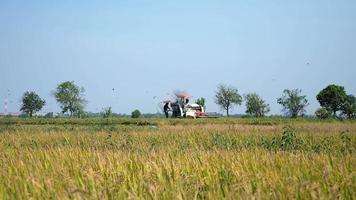
Crop production in Kenya is growing crops for sale and domestic use. Field practices are activities that you carry out on the field. This is to facilitate proper growth and maximum yield of the various crops grown.
Field practices include the following:
- Crop rotation.
- Mulching.
- Routing filed practices.
- Crop protection.
- Harvesting.
1. Crop rotation.
This is the growing of different types of crops on the same piece of land. In addition, it is usually done in an orderly sequence and in different seasons.
Importance Of Crop Rotation.
- Maximizes use of nutrients and moisture.
- Breaks the life cycle of pests and disease agents.
- Maintains good soil structure.
- Reduces soil erosion due to adequate soil cover.
- Controls weeds that are specific to certain crops e.g striga on cereals.
- Improves soil fertility when you include legumes in crop rotation.
Factors Influencing Rotational Programme.
- Growth habits and nutrients requirements.
- Liability to soil erosion.
- Crops attacked by the same pests and diseases should not follow one another in the programme.
- Availability of capital and market for example beans or peas in legumes.
2. Mulching.
Mulching is the placement of materials such as banana leaves or polythene sheets on the ground next to the growing crops.
However, these materials should not come into contact with the base of the crops as they may encourage pest attacks.
- Meghan Markle bio-age, husband, children, career.
- TB Joshua age, origin, controversy issues, wife, children, worth.
- Anthony Davis bio-age, wife, children, career, net worth.
- Clemente Morales Bio, Wiki, KTAB News, Age, Education, Family, Children, Wife, Net Worth, and Career
- Bob Huggins bio-age, wife, children, attack, net worth.
- Portia Bruner bio-age, children, husband, net worth, illness, career.
- Dawn Mitchell wiki, age, husband, children, net worth.
Importance Of Mulching.
- Reduction of evaporation rate.
- Smoothers weeds.
- Moderation of soil temperature.
- Reduction of speed of run offs.
Types Of Mulching Materials.
- Organic mulching materials such as; saw dust, wood shavings, coffee pulps or rice husks.
- Inorganic or synthetic materials commonly used are either black or transparent polythene sheets.
Advantages Of Mulching.
- Prevents water evaporation thus maintaining moisturr in the soil for crop use.
- Acts as an insulator thus modifying soil temperature.
- It helps to control soil erosion.
- It controls weeds by supressing them.
- After decomposition organic mulch add nutrients to the soil thus improving its fertility.
- Humus produced after the decomposition of organic mulch improves soil structure and the water in the soil.
Disadvantages Of Mulching.
It is a fire risk.
Provides a breeding ground as well as a hiding place for pests that may attack the crops.
Traps the light showers of rainfall thus lowering the chances of raindrops reaching the soil.
It is expensive to acquire, transport, and apply.
3. Routing Field Practices.
a. Thinning
This is the removal of excess, weak, damaged, or diseased seedlings.
Allows the remaining seedlings to get enough nutrients and moisture.
Moreover, its aim is to obtain the optimum plant population.
b. Gapping.
Gapping is filling the gaps so as to maintain a proper plant population.
Moreover, gaps occur as a result of the failure of seeds to germinate or the dying of seedlings.
It should be done early enough for the seedlings to catch up with other plants.
c. Rogue.
This is the removal of a plant that has a disease.
However, the destruction can be achieved through the burning of the plant which you uproot.
d. Pruning.
Pruning is the removal of extra unwanted parts of the plants.
4. Crop Protection.
a. Weed Control
Weeds are plants that grow in a place where they are not in need.
Such plants include; blackjack, couch grass, thorn apple, and Mcdonald’s eye.
Such plants should be eradicated or controlled using the recommendable methods.
Crop pests are living organisms that are harmful to plants.
b. Pest Control
They include; insects, nematodes, rodents, and mites.
They cause great damage to crops in the field and storage produce.
5. Harvesting.
It is the gathering of the farm produce after maturity.
a. Time Of Harvesting Depends On;
- Stage of maturity of the crops.
2. Use of the crops.
3. Tastes and preferences of consumers.
4. Weather conditions, hence liability to spoilage.
5. Moisture.
Types of storage.
- Traditional storage structures.
- Modern storage structures.
Preparation of the store.
- Cleaning of the store.
- Maintenance.
- Dusting the store by appropriate chemicals.
- Clearing the vegetation around the store to keep off vermin.
- Best Public High Schools in Kiambu County.
- Kenya Medical Training College, courses, requirements.
- Kenya Institute of special education, courses.
- Bay head elementary school history, enrolment, programs offered.
- List of Accredited Private Universities in Kenya
- Mount Kenya University history, fees, courses
- List of Best private secondary schools in Nairobi County.